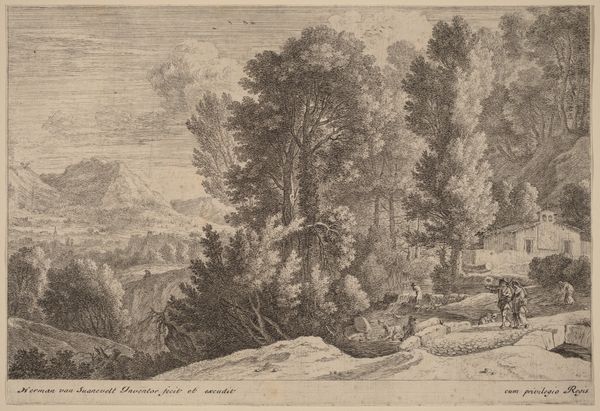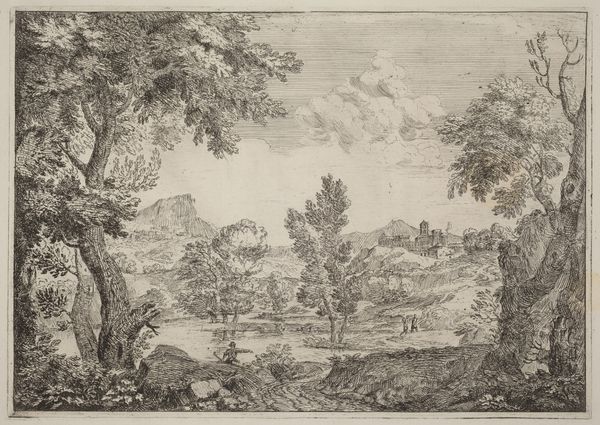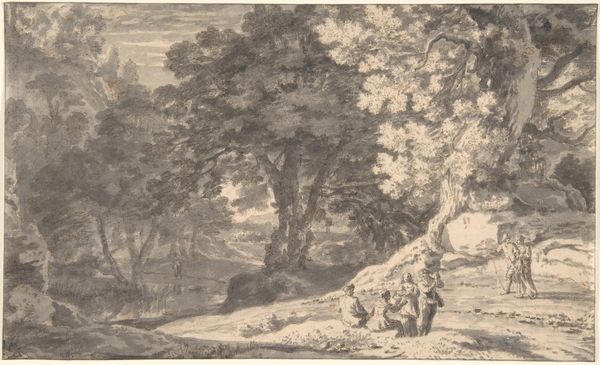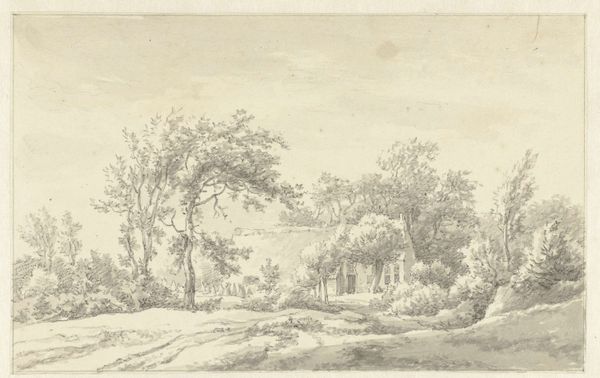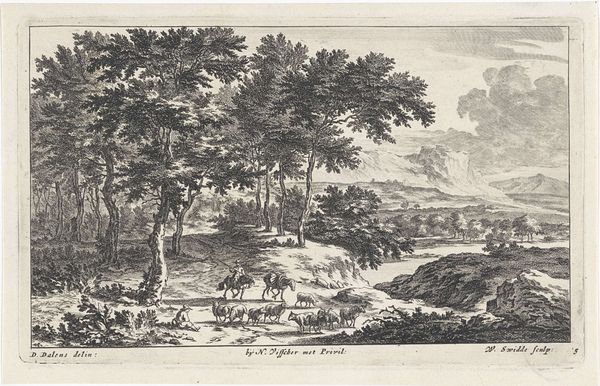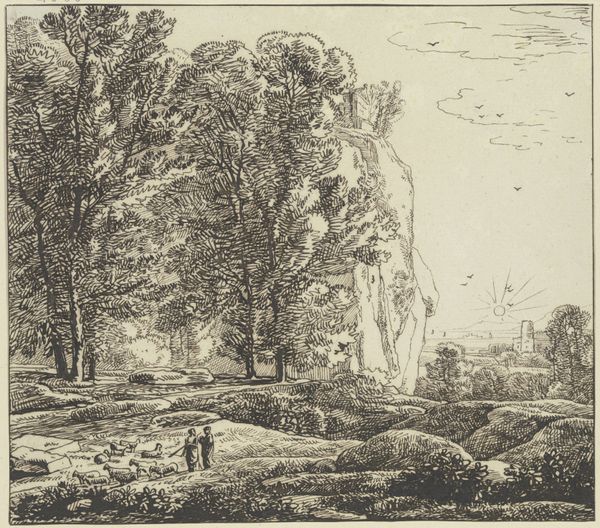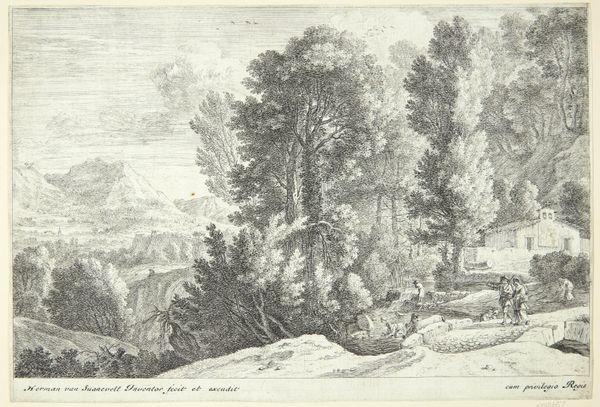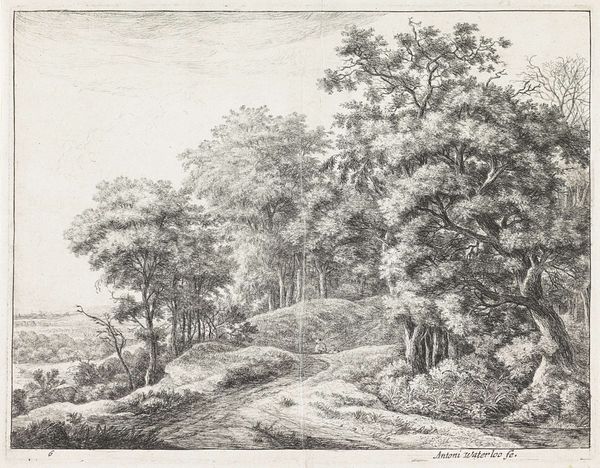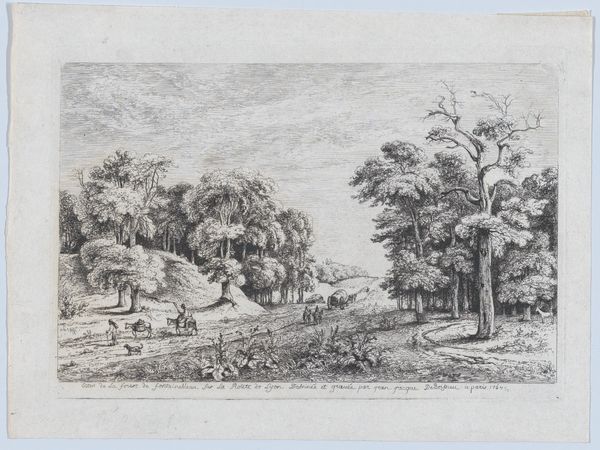
drawing, etching
#
drawing
#
baroque
#
etching
#
landscape
#
river
#
mountain
Dimensions: height 154 mm, width 203 mm
Copyright: Rijks Museum: Open Domain
Editor: This etching from the Rijksmuseum, “Landschap met wasvrouwen”, or “Landscape with Washerwomen,” presumably dating to the 17th century, is stunning in its detail. The scene feels simultaneously serene and bustling with activity. How do you interpret this work, especially concerning the women's role in it? Curator: That's a great starting point. This piece offers a window into the intersection of landscape and labor, specifically gendered labor, within 17th-century Dutch society. These weren’t just idyllic scenes; they reflected social hierarchies. Consider the physical labor these women were undertaking versus the relative leisure implied by the figures observing them. Does that juxtaposition spark any questions? Editor: It does! It makes me think about the class dynamics. Were these kinds of scenes romanticized or seen as accurate depictions of everyday life? Curator: That's key. Prints like these circulated widely, shaping perceptions. We must consider how the artist may have idealized or, conversely, critiqued existing power structures. The labor of women, often unacknowledged, becomes part of the aesthetic appreciation of the landscape. Who is this landscape *for*? Editor: So it's not just about pretty scenery, but about who has access to that scenery, and at whose expense? That gives the image a whole new layer of meaning! I had just assumed this depicted country life, but now I understand it's a narrative about labor and access. Curator: Exactly. It's about unveiling the power dynamics inherent within seemingly simple scenes. Art offers an important space for thinking about how historical and cultural forces intersect. Editor: This discussion has completely changed how I see this piece. I will always see such artworks as a representation of real people's lives now, thanks!
Comments
No comments
Be the first to comment and join the conversation on the ultimate creative platform.


